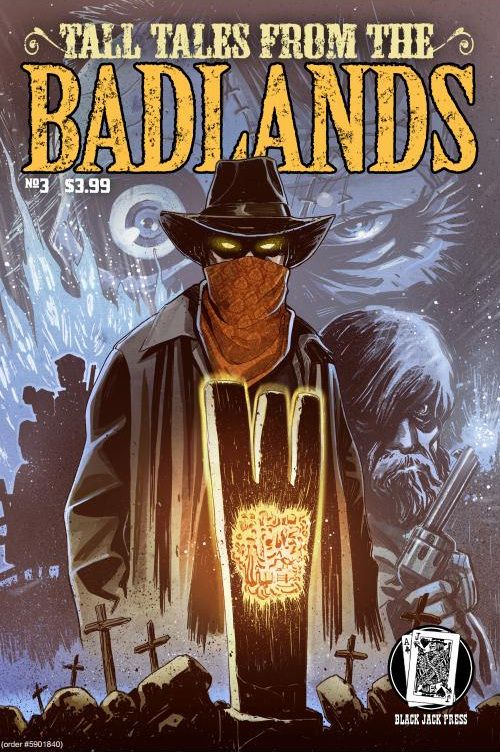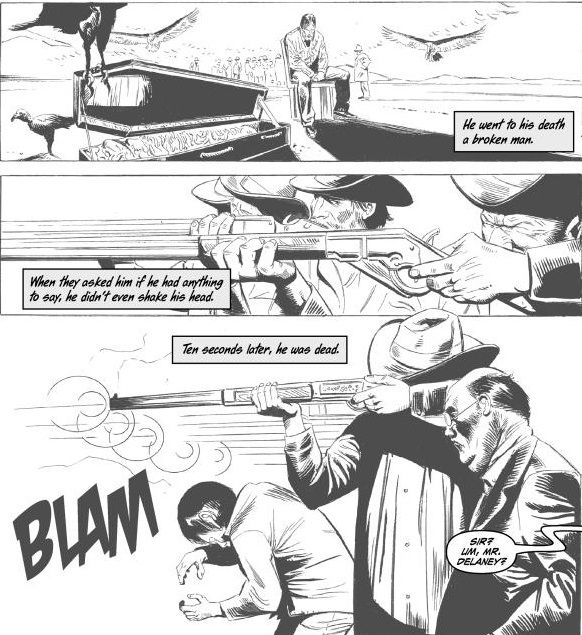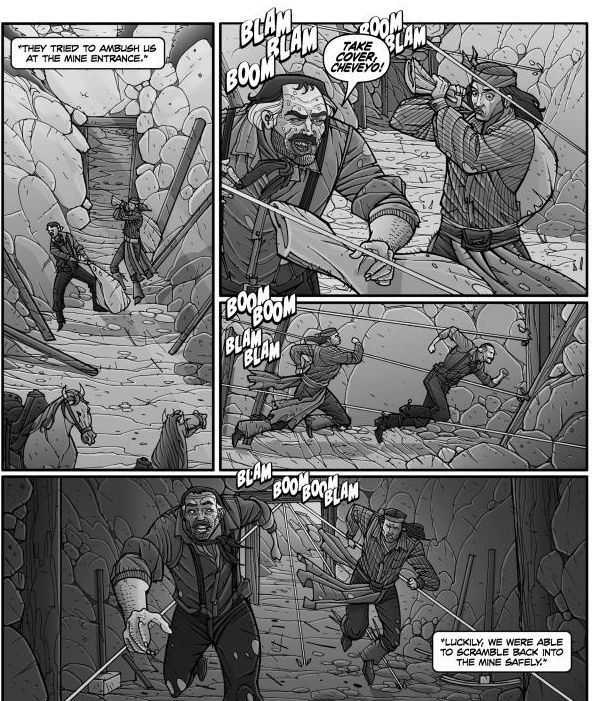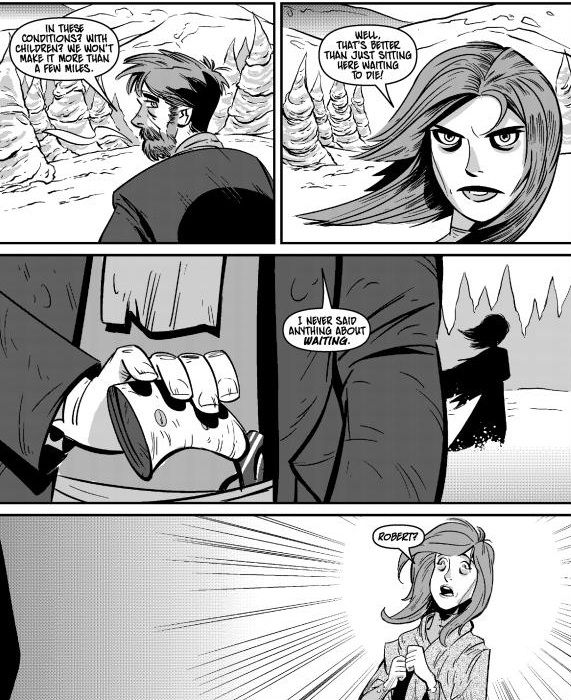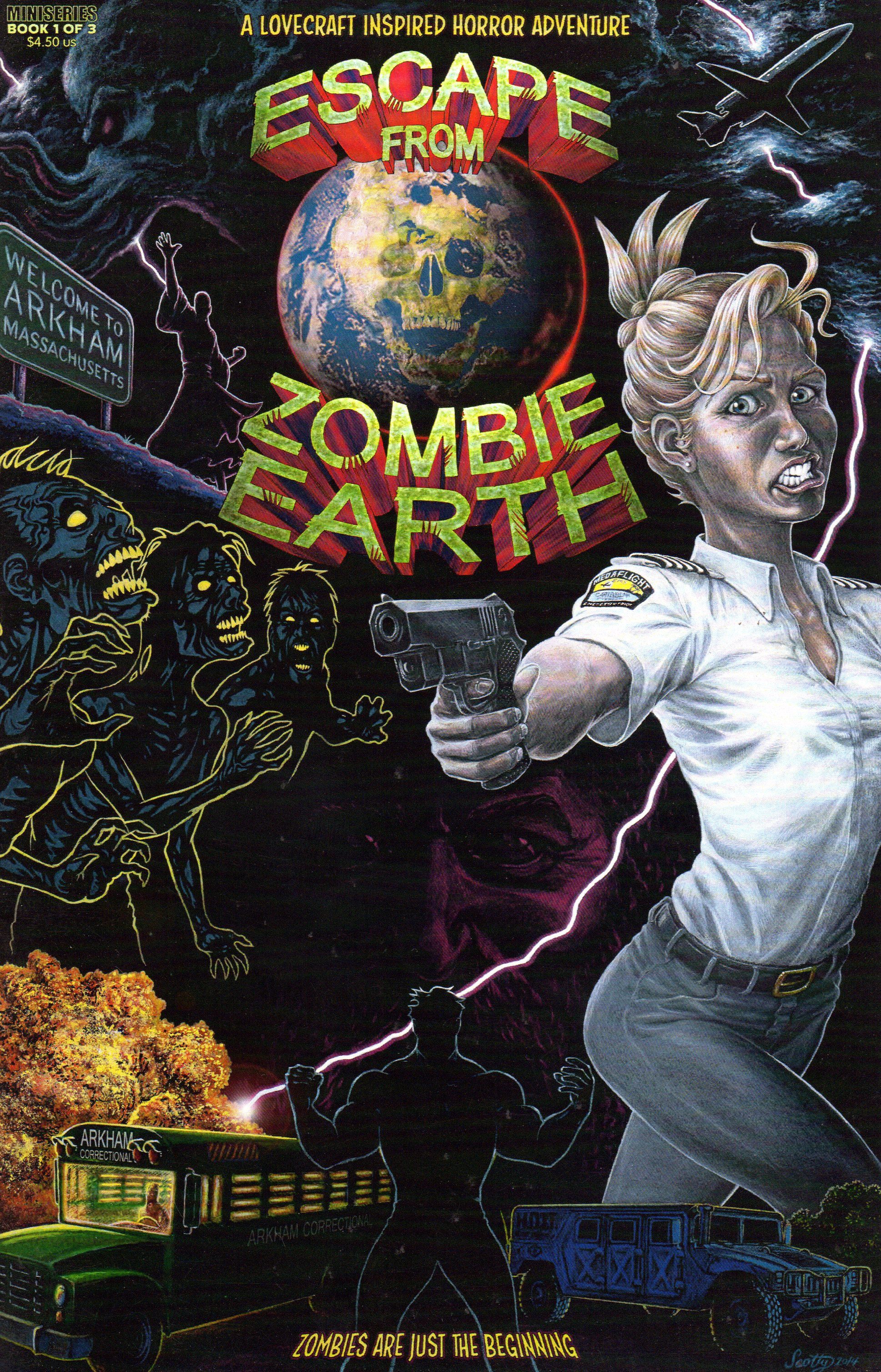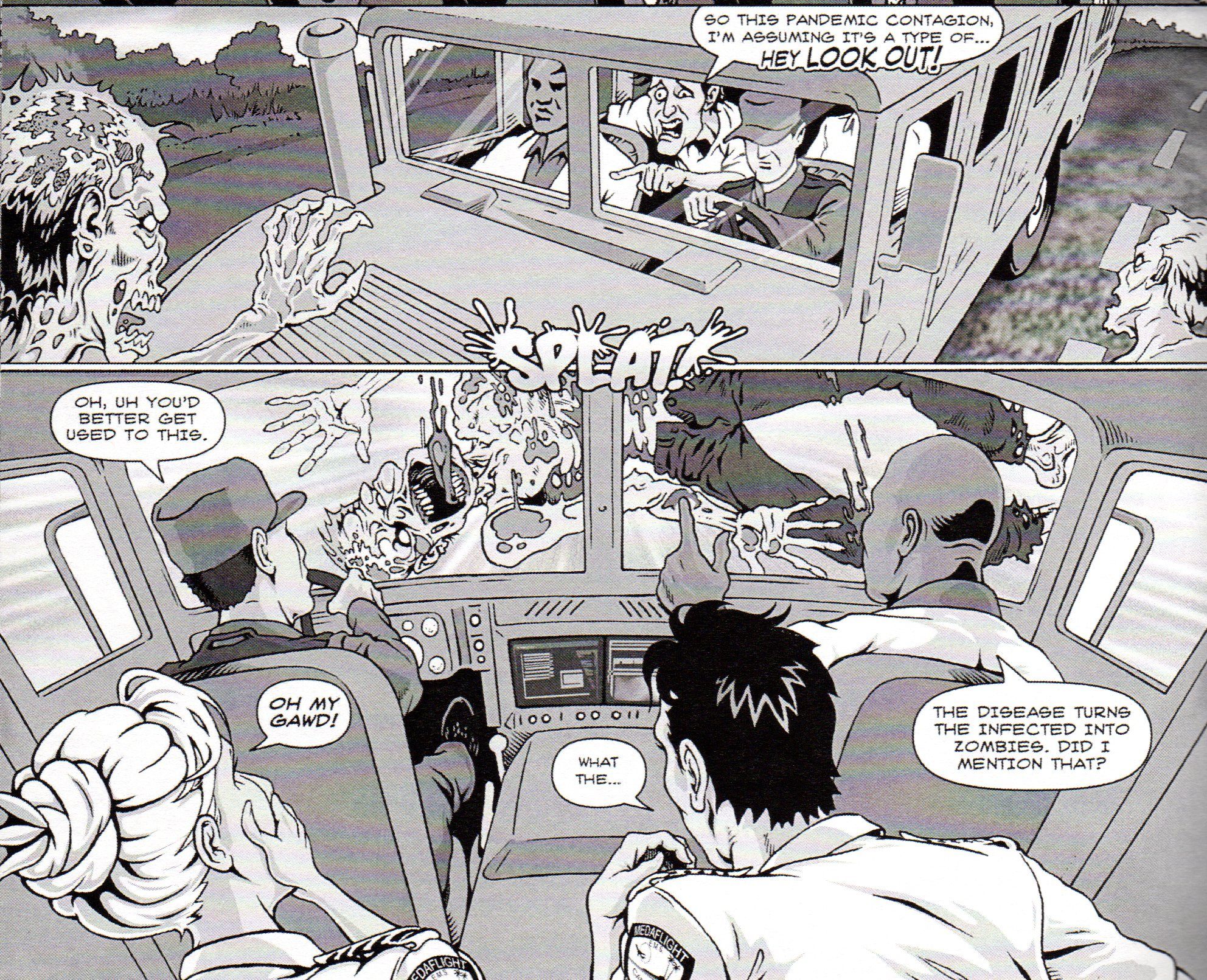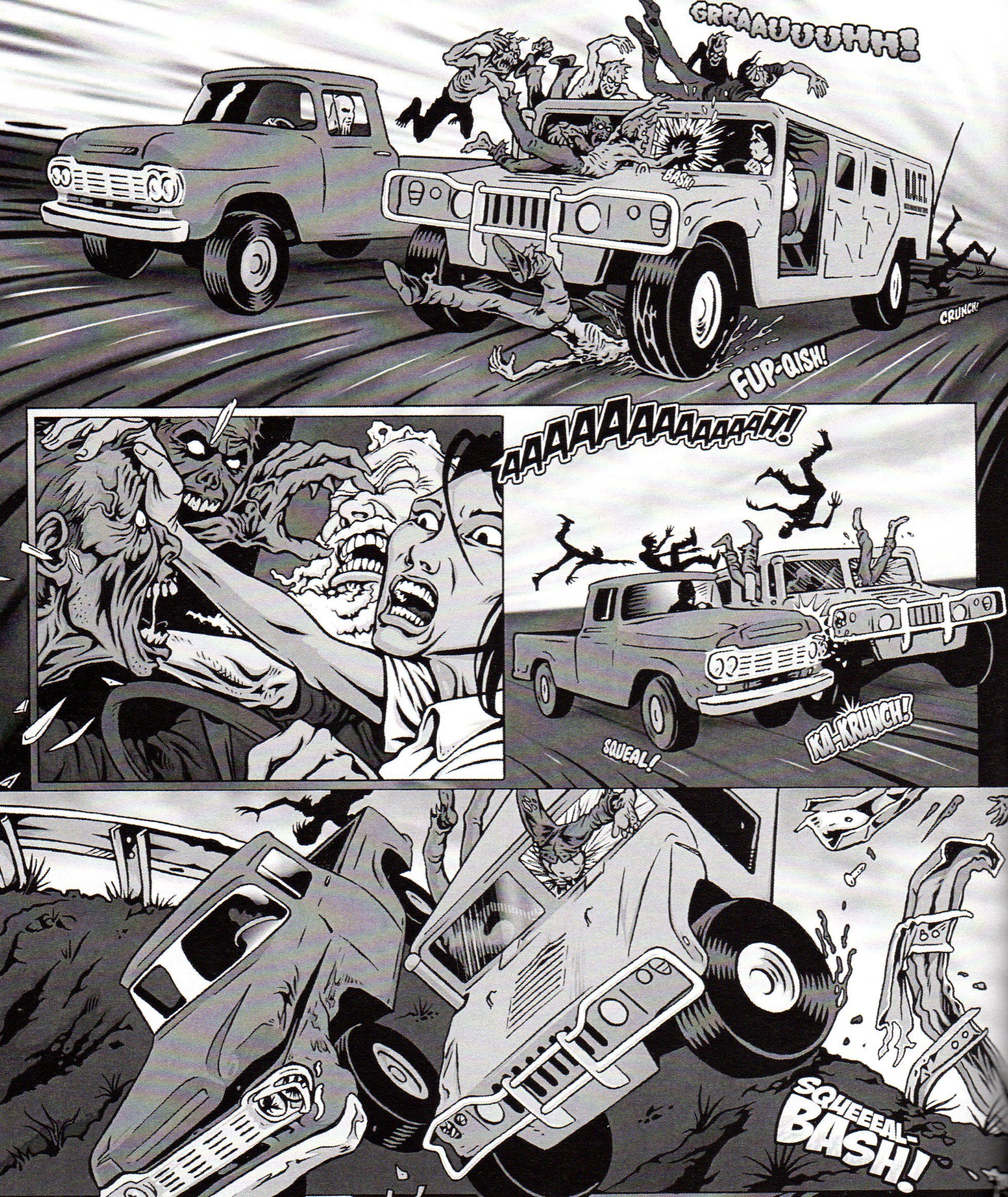I was sent a couple of DIY comics in the mail (both snail and digital) recently, and I'm going to review them both! Buckle up!
Tall Tales from the Badlands #3 is first up. Sean Fahey, the editor and founder of Black Jack Press, has assembled a nice collection of creators to tell some nifty "weird Western" stories. It's a nice package - 55 pages for $3.99, which is a darned fine price.
You can check it out on Facebook, and you can get print versions here and digital copies here.
Obviously, with "weird Western" tales, you're always waiting for the twist, which is why I'm always a little wary of them. In an anthology, the twist is even more important, because the stories are short and need that little kick in them. The stories in Tall Tales of the Badlands fall into this storytelling genre, obviously, with the writers coming up with plot twists and building their stories from there, but one of the cool things about the book is that while the stories fall into the sub-category of "weird Western," not all of them are strictly supernatural, which adds some nice nuances to them. The first story, "The Judgment of the People" by Mark Wheaton, is the longest story in the book, possibly because Wheaton is (I would guess) the biggest name in the book. He tells a story of a hanging judge who is fairly indiscriminate about his sentences. The narrator, who edits the local newspaper, tells us at the beginning of the story that his father, the editor before him, was killed because he made some powerful enemies, but the murder was pinned on his brother, the narrator's uncle. The judge has no choice but to sentence the narrator's uncle to death. Later, a man named Kazimir Janousek finds himself in the same situation - his son, who is "simple" and afraid of horses, has been accused of stealing a horse, and Janousek wants the narrator to write about him and gin up sympathy for the boy. Unfortunately, the judge decides that the boy should be hanged. Of course, the real thieves are eventually arrested, so Janousek plots revenge, which he gets in a particularly odd way. The story appears to be supernatural, but we have no clear way to know if Janousek's revenge comes to fruition, because the narrator doesn't actually see it. It's an odd twist in that we have to make a bit of a leap of faith.
There's a supernatural element to the story, but it's not the main point of the story. The narrator, Janousek, and even the judge aren't just plot devices, but interesting characters - the narrator doesn't do anything to help Janousek's kid, for instance, while Wheaton wisely makes the judge not a figure of complete evil. It's a fairly complex story for being so short.
The other stories are good, too, although not quite as intricate as the first. Fahey writes two stories himself. The first, "Apologies," concerns a family that gets lost in the Colorado wilderness and the man's decision to kill his entire family rather than let them starve to death. It relies on a twist ending that is a bit obvious but still very effective, and it's also not supernatural horror, but the horror of the harsh reality of the frontier. His second story, "Where the Heart Is," gives us two families on the frontier, but one of them is tired of the hard living and wants to go back east. Fahey pulls a clever twist this time, as suddenly the focus shifts as the two families debate the merits of the wild West as opposed to the more civilized East. "Rustlers," by Robert Napton, features a train robbery that turns weird when one of the passengers - the only passenger, as it turns out - is far calmer than you might expect. This is the most pure horror story in the collection, and it's a neat swerve on the idea of competition among cattlemen, but Napton tries a bit too hard to come up with the ending, which features some poetic justice. The story has to end on a kicker, but it seems like this one is a bit too tidy. Matt Dembicki writes "All Mine," in which a miner accidentally talks too much about his claim, drawing the attention of thieves who chase him and his Indian partner back to the mine, where they besiege him. It's another story that unfolds in a fairly obvious fashion, but it still works pretty well.
The stories are entertaining, and the writers get to work with some good artists (Kel Nuttall letters all the stories). Wheaton's story is drawn by Jerry DeCaire, and if Lee Weeks and Eduardo Barreto had a love child, it would probably look a lot like DeCaire's work. The only issue I had with his drawings was a few images of the judge, who looks so porcine as to be almost inhuman. It's quite odd.
DeCaire does really nice work with his brush, giving the people a dusty, western feel, and he uses blacks to very good effect to highlight the despair of Janousek and the cynicism of the narrator. John Fortune draws "Apologies," and his cartoony style is a bit at odds with the depressing material, but he does a very good job with the faces of Robert and his wife Becky as they discuss their bad situation. He uses thick lines under their eyes to imply hunger and exhaustion, and he does a good job with the details on the clothing of the characters - they look like finery that has been worn bare by the conditions. Franco Cespedes's art for "Rustlers" is quite good, although his finer line doesn't allow the impact of the horror to come through too well, as the story looks a bit too clean for what's in store for the characters. His cattleman, however, is a wonderful example of capitalistic evil - he oozes greed and smugness, and it's due almost entirely to Cespedes. The art on "All Mine," by Ezequiel Rosingana, is very detailed and very precise - it's a bit like a more restrained Tradd Moore, and it works well in the story. Rosingana draws every rock and every bead of sweat on the characters, which sets up the more supernatural elements of the story rather well. In Fahey's second story, Ruben Rojas uses grayscales very nicely to create what looks like an idyllic setting, which makes the family's desire to move back to Boston even more unusual. Rojas has to draw a lot of talking heads, but he does a nice job shifting from calmness to anger tinged with despair on the characters' faces. Even the pin-ups - by Mauro Reifschneider, Crash! Landen, and Adrian Bago Gonzalez - are pretty cool.
I really like this anthology - it's nice and thick, the stories are neat and not your usual horror/Western hybrids, and the artists are top-notch. It's a good place to spend your 4 dollars if you don't want to drop it on a thin Big Two comic that takes you three minutes to read. Click on the links above and check it out!
Rating: ★ ★ ★ ★ ★ ★ ★ ★ ☆ ☆
Escape from Zombie Earth #1 (of 3) is up next. Scotty Richard sent this along to me, as he's the writer and artist of the book. Here's the web site, where you can find out where to get the book. The Internet is awesome!
Richard begins with a woman named Gillian, who's having a bad dream in which she has to fight off zombies. She wakes up and we learn that she's part of a team of doctors flying a patient to ... well, somewhere.
It doesn't matter, because suddenly the entire plane appears to fall through a dimensional wormhole and ends up in Boston, but a Boston unlike the one they know. Apparently, their patient, Dr. Wells, is from the dimension, and he brought them all through somehow. Wells wants them to go back to their world with a record of what has happened in his world, which has been overrun by zombies. Richard's nifty twist is that the world in which Wells lives has place names from H. P. Lovecraft's fiction, implying that Lovecraft wasn't actually writing fiction but describing a separate reality. So there are Lovecraftian devotees who welcome the zombie apocalypse, for instance.
Gillian learns that she has bad dreams because her mother was from this world, which makes her able to cross dimensions just like Wells did. Wells also mentions a mega-plot, which involves powerful enemies trying to rule the world, but as usual, that's the least interesting part of the book. Richard never lets off the gas, which makes this a frenetic, action-filled book, with unsurprising tragedy (of course someone gets bitten!) and a surprising guest star. Richard cleverly decides not to keep Gillian and her co-workers on "Zombie Earth" too long, as they do manage to get back to their dimension. But it's only part 1 of 3, so of course there's a small teaser at the end for more mayhem to come. Still, it's nice that he doesn't drag out their adventure in another dimension. This is not a decompressed comic in the least. That means, naturally, that there's not a ton of character development, as too much stuff is happening, but Richard avoids clichés by simply having the characters advance the plot. That might be damning with faint praise, but it does help reveal a bit of character through actions rather than words, which isn't a bad thing at all.
The only really goofy part is when Camm, Gillian's co-pilot, suddenly realizes they've flown through a dimensional portal and that the world they're on now is doomed. Because, sure, that's the first thing you would think of - dimensional portal. Right.
Richard's art is solid - it reminds me of someone, but I can't think of whom right now. He has a slightly cartoony style that makes the book just slightly a bit more tongue-in-cheek than perhaps it should be, although I want to believe that Richard realizes that Lovecraftian-inspired zombies are a tiny bit silly, so having them crawl out of the water with tentacles coming out of their mouths is going to look a bit goofy, no matter how scary they are. Richard does a good job laying the book out - he has a lot to get to, but he's able to pack it all in, and even though there are plenty of characters, they're all distinctive enough that we never lose who's who. He has a lot of fun with the zombies - they're certainly not as terrifying as "realistic" zombies, but they're gross and relentless, and toward the end, Richard gives us a scary drawing of a zombie that will lead us, I assume, to the second issue. One of the characters is a bit too ... sexy, I guess (I don't want to give away who it is, but it's not a sexy character), but that's fine. Richard has a bold line, and he does nice work with the inks, bringing out the decrepitude of the zombies very well. Some of Richard's poses are a bit stiff and awkward, which isn't surprising in a new artist, but his gory designs help make up for that. It's a pretty cool-looking comic.
I'm not as impressed with it as I am with Tall Tales from the Badlands, but that might be expected, as this is Richard's first comic. But it's a good start with a clever hook, it's packed with action, it has a pretty good cliffhanger, and it looks nice. That's not a bad combination!
Rating: ★ ★ ★ ★ ★ ★ ★ ☆ ☆ ☆
So that's some groovy indie books for you to check out. Those are always fun, right?


